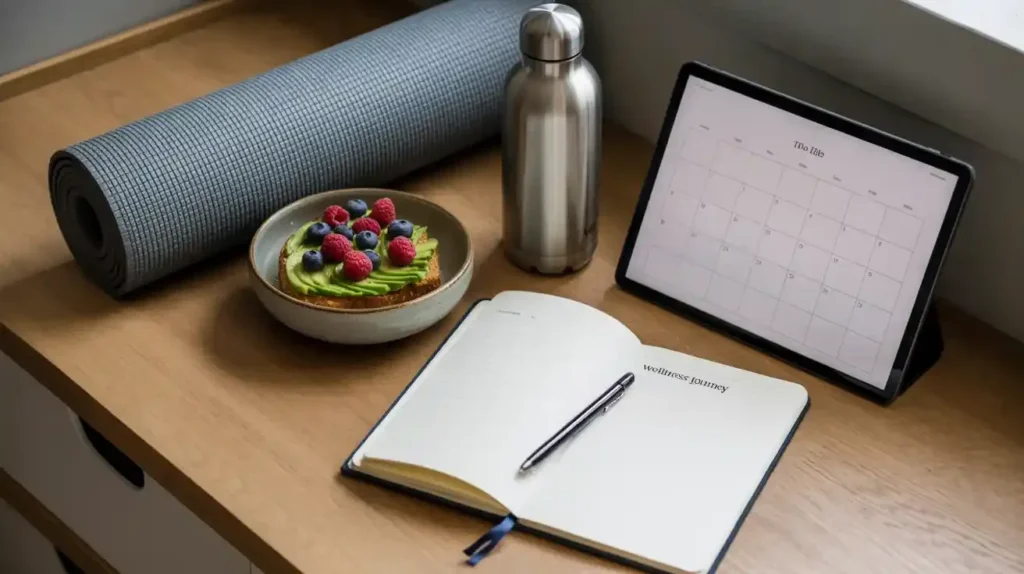Balanced Lifestyle Strategy Drawdown: Live and Invest
In today’s fast-paced world, stress, uncertainty, and burnout are on the rise at alarming rates. The concept of balanced lifestyle strategy drawdown has emerged as a powerful solution, not just for healthier living, but also for thoughtful financial planning.
By blending personal well-being with sustainable asset management, this strategy can help people maintain a steady quality of life even in uncertain times.
This article explores what a balanced lifestyle strategy drawdown truly means, how it can reshape both your daily habits and financial decisions, and how to implement it effectively.
Along the way, we’ll integrate related concepts such as health planning, time allocation, sustainable spending, and risk mitigation, all of which play critical roles in this lifestyle-investment hybrid model.
Understanding the Concept of Balanced Lifestyle Strategy Drawdown
The phrase balanced lifestyle strategy drawdown combines two essential ideas: balance in personal life and strategic withdrawal of financial resources. Unlike aggressive financial drawdowns or extreme life shifts, this approach favours moderation.
It’s not about sudden sacrifices or massive lifestyle changes. Instead, it’s about consistent, well-measured decisions that align with long-term goals.
The term originates from financial planning, where “drawdown” refers to the method of gradually withdrawing assets over time. When merged with lifestyle, it reflects a system of balanced living supported by intentional, calculated actions, both spiritually and materially, physically, and financially.
How This Strategy Connects Life and Finances
One of the most significant advantages of a balanced lifestyle strategy drawdown is how it connects well-being with Wealth. Instead of separating life and money, this strategy encourages synchronization. When you reduce excessive consumption and prioritize meaningful living, your spending naturally becomes more purposeful.
Many individuals use this approach during early retirement or semi-retirement phases. It helps them regulate spending from retirement funds while enjoying life thoroughly. However, its benefits extend beyond retirement. Even professionals in their 30s and 40s are embracing this to prevent burnout and create sustainable Wealth.
Here’s how it works in practice:
- Allocate monthly income toward health, hobbies, and necessities instead of luxuries.
- Use data-driven tools to monitor financial drawdowns and energy levels.
- Reduce high-stress commitments and replace them with meaningful routines.
Key Lifestyle Benefits of This Strategy
Besides financial perks, the lifestyle transformation is massive. When implemented effectively, this strategy leads to improved physical and mental health, reduced financial anxiety, and more time for family, hobbies, and rest. It encourages a slower, more intentional pace of life that supports overall well-being and long-term fulfilment.
Physical and Mental Balance
Balancing your lifestyle helps regulate your sleep, diet, and physical activity. It promotes mindfulness, prevents burnout, and encourages long-term resilience. Daily routines become smoother, and energy levels stabilize.
Smart Time Allocation
With a clear drawdown strategy, individuals are better equipped to manage their time. No more overcommitting or overworking. The focus shifts to what matters most: family, health, learning, and personal growth.
Sustainable Spending and Savings
This approach redefines what “enough” means. It detaches self-worth from material possessions, leading to conscious budgeting. Gradual drawdowns from savings ensure you never run out of resources too early or spend too much too soon.
Common Mistakes to Avoid While Using This Strategy

While the balanced lifestyle strategy drawdown is powerful, it can lose effectiveness if not applied mindfully. One common mistake is ignoring personal energy levels and focusing solely on finances, which leads to burnout. Others struggle with being too rigid or too lenient, making the strategy either stressful or ineffective.
Another issue is underestimating inflation, which can reduce the value of your savings over time. Many also fail to track progress regularly or forget to connect their emotional well-being with financial planning. Avoiding these missteps ensures the strategy remains practical, flexible, and rewarding in the long run.
Blending Flexibility With Structure: The Ideal Balance
The balanced lifestyle strategy draws on adaptability. Life changes constantly, so your drawdown strategy should too. Yet, too much flexibility can lead to inconsistency. Hence, you need a framework.
Create a routine that you can follow 70% of the time. Allow 30% for life’s surprises, fun, or downtime. Over time, this adaptive rhythm becomes sustainable and enjoyable.
Bullet-Based Implementation Tips:
- Set monthly reflection goals to track your emotional and financial wellness.
- Use budgeting apps that integrate lifestyle goals.
- Start small by reducing one work meeting per week to make time for walks or journaling.
- Avoid debt accumulation by syncing purchases with planned drawdowns.
- Revisit your strategy quarterly and make micro-adjustments.
Essential Components to Build Your Drawdown Strategy
A successful drawdown strategy isn’t just about cutting costs; it’s also about maximizing returns. It’s about making informed choices and optimizing resources. There are key elements that must be included:
1. Personal Clarity
Before applying any drawdown model, self-reflection is vital. Clarifying your values, vision of success, and daily balance helps shape a strategy that truly fits your life.
- What are your most important values?
- What does success look like for you in five years?
- What would a day of meaningful balance look like?
2. Expense Prioritization
You must differentiate between essential and non-essential spending. Many people waste money on things that don’t align with their goals. When you list down your priorities, your financial drawdowns become more efficient.
Real-Life Use Cases and Success Stories
Many people from diverse backgrounds have successfully applied this method. Whether you’re a freelance artist, a corporate manager, or an early retiree, this strategy is scalable and adaptable.
For example:
- A software engineer chose to work four days a week instead of five, offsetting the income gap with passive income sources.
- A couple in their mid-40s applied this method to retire early by gradually reducing expenses and relying on investment-based drawdowns.
- A solo entrepreneur adopted this model to manage stress and spend more time with family while still meeting financial goals.
These stories highlight that balance isn’t just a luxury; it’s a practical tool for life design.
Conclusion: Build a Life That Feels Rich, Not Just Looks Rich
The balanced lifestyle strategy drawdown isn’t just a framework; it’s a mindset. It empowers individuals to Step away from the chaos of overwork and overspending and move toward a life of calm, clarity, and control. By aligning your lifestyle habits with intentional financial decisions, you create a sustainable system that fosters the coexistence of health, Wealth, and happiness. It’s not about living with less, it’s about living with purpose.
This strategy is flexible enough for young professionals, families, or retirees. Whether you’re aiming for early retirement or simply looking to reduce stress, it provides a structured yet adaptive path forward.
With consistent reflection, gradual financial drawdowns, and focused lifestyle changes, you can build a future that feels truly balanced mentally, physically, emotionally, and financially.
Frequently Asked Questions:
What is a lifestyle drawdown strategy?
It’s a method of gradually withdrawing from your financial resources while adjusting your lifestyle for long-term balance.
Can this strategy help in early retirement?
Yes, it’s advantageous for those planning to retire early or live on a fixed budget.
Is it suitable for young professionals?
Absolutely. It supports burnout prevention and smarter spending from an early age.
Do I need to make drastic life changes?
Not necessarily. The strategy is most effective when implemented gradually.
How often should I review my strategy?
Quarterly reviews are ideal to ensure alignment with goals and lifestyle.


